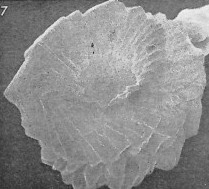Perchnielsenella stradneri
Set number: 1981
-
1
-
2
-
3
-
4
-
5
-
6
-
7
-
8
-
9
-
10
-
11
-
12
-
13
-
14
-
15
-
16
-
17
-
18
-
19
-
20
-
21
-
22
-
23
-
24
-
25
-
26
-
27
-
28
-
29
-
30
-
31
-
32
-
33
-
34
-
35
10µm
Set number: 1980
-
1
-
2
-
3
-
4
-
5
-
6
-
7
-
8
-
9
-
10
-
11
-
12
-
13
-
14
-
15
-
16
-
17
-
18
-
19
-
20
-
21
-
22
10µm
Set number: 1976
-
1
-
2
-
3
-
4
-
5
-
6
-
7
-
8
-
9
-
10
-
11
-
12
-
13
-
14
-
15
-
16
-
17
-
18
-
19
-
20
-
21
-
22
-
23
-
24
-
25
-
26
-
27
-
28
-
29
-
30
-
31
-
32
-
33
-
34
-
35
-
36
-
37
-
38
-
39
-
40
-
41
-
42
-
43
-
44
-
45
-
46
-
47
-
48
-
49
-
50
-
51
-
52
-
53
-
54
-
55
-
56
-
57
-
58
-
59
-
60
-
61
-
62
-
63
10µm
Set number: 1979
-
1
-
2
-
3
-
4
-
5
-
6
-
7
-
8
-
9
-
10
-
11
-
12
-
13
-
14
-
15
-
16
-
17
-
18
-
19
-
20
-
21
-
22
-
23
-
24
-
25
-
26
-
27
-
28
-
29
-
30
-
31
-
32
-
33
-
34
-
35
10µm
Set number: 1978
-
1
-
2
-
3
-
4
-
5
-
6
-
7
-
8
-
9
-
10
-
11
-
12
-
13
-
14
-
15
-
16
-
17
-
18
-
19
-
20
-
21
-
22
-
23
-
24
-
25
-
26
-
27
-
28
-
29
-
30
-
31
-
32
-
33
-
34
-
35
-
36
-
37
-
38
-
39
-
40
-
41
-
42
-
43
-
44
-
45
-
46
-
47
10µm
Set number: 1977
-
1
-
2
-
3
-
4
-
5
-
6
-
7
-
8
-
9
-
10
-
11
-
12
-
13
-
14
-
15
-
16
-
17
-
18
-
19
-
20
-
21
-
22
-
23
-
24
-
25
-
26
-
27
-
28
-
29
-
30
-
31
-
32
-
33
-
34
-
35
-
36
-
37
10µm
Set number: 1975
-
1
-
2
-
3
-
4
-
5
-
6
-
7
-
8
10µm
A cylindrical calcareous nannofossil, circular to broadly elliptical in plan view, is distinguished by a double-storey, unicyclic wall that thickens towards the junction. Each storey comprises thirty to forty strongly sinistrally imbricated segments. The two walls are unequal in height, with their intersection appearing indistinct under light microscopy (LM). At this junction, a double-layered amedian diaphragm is present. The outer surface of Perchnielsenella stradneri is densely ornamented with both lateral and longitudinal features. In both storeys of the wall, prominent protruding nodes alternate with pits, forming a complete cycle near the intersection.
Perchnielsenella stradneri differs from Perchnielsenella ismailkoselii by its dense lateral and longitudinal ornamentation on its outer surface. It is further distinguished from Perchnielsenella oweinaensis by its circular to broadly elliptical and narrow central opening in the plan view and by its morphology of the walls that gradually widen towards their intersection in the side view. In contrast, Perchnielsenella oweinaensis exhibits a larger, strictly circular central opening in plan view and a uniform wall thickness, excluding ornamentation.
The optical properties of Perchnielsenella stradneri align with those observed in the family Perchnielsenaceae.
Perch-Nielsen, K. 1973c. Neue Coccolithen aus dem Maastrichtien von Danemark, Madagaskar und Agypten. Bulletin of the Geological Society of Denmark. 22: 306-333.
Watkins, D. K. & Bowdler, J. L. 1984. Cretaceous calcareous nannofossils from Deep Sea Drilling Project Leg 77, southeast Gulf of Mexico. Initial Reports of the Deep Sea Drilling Project. 77: 649-674.
